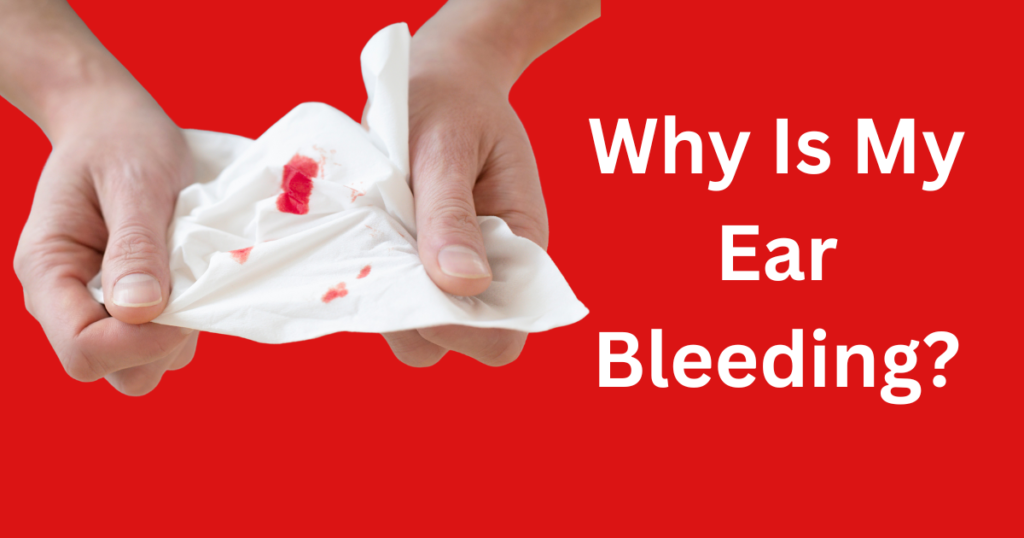What Causes Fluid Buildup in the Middle Ear?
Fluid in the middle ear occurs when the eustachian tubes, which connect the middle ear to the back of the throat, become blocked. This prevents fluid from draining properly, causing pressure and potential hearing problems. Common reasons for this blockage include colds, sinus infections, or allergies.
Effective Methods to Drain Fluid from Middle Ear at Home
If you’re looking for ways to drain fluid at home, here are a few techniques that may provide relief:
1. Ear Massage to Drain Fluid
An ear massage to drain fluid is one of the simplest and most effective techniques. By massaging the area behind your ear and along the jawline, you can help open the eustachian tubes, allowing fluid to drain more easily. Here’s how you can do it:
- Gently pull on your ear lobe while tilting your head to the side.
- Use your fingers to massage the area behind your ear in small, circular motions.
- Continue this massage for several minutes to encourage fluid movement.
2. Perform the Valsalva Maneuver
The Valsalva maneuver is a common technique to balance the pressure in your ears, which can help drain fluid. To do this:
- Pinch your nose closed with your fingers.
- Close your mouth and gently blow as if you’re trying to blow air through your nose.
- This action helps open the eustachian tubes, allowing fluid to drain.
Be careful not to blow too hard, as this can cause ear damage.
3. Use Steam Inhalation
Steam is a great way to relieve blockages in the eustachian tubes, which helps drain fluid from the ear. To use steam inhalation:
- Heat water until boiling, then transfer it into a bowl.
- Place a towel over your head and lean over the bowl, allowing the steam to enter your nasal passages.
- Breathe deeply for 10-15 minutes.
This method helps reduce congestion and opens up the tubes to facilitate drainage.
4. Warm Compress
A warm compress applied to the ear can help relieve pain and loosen up the fluid in the middle ear. To do this:
- Heat a clean cloth or towel with warm water.
- Place the warm compress on the affected ear for 10 to 15 minutes.
- Repeat several times throughout the day for the best results.
This method relaxes the ear muscles and improves fluid flow.
5. Over-the-Counter Decongestants
Decongestants can help reduce swelling in the nasal passages and eustachian tubes, promoting fluid drainage. They come in different forms like nasal sprays or oral medications. However, these should only be used for a short period and in accordance with the instructions on the package.
How Does an ENT Drain Fluid from the Ear?
If home remedies don’t work, you might be wondering, how does an ENT drain fluid from the ear? An ENT specialist will typically perform a procedure called a myringotomy, where a small incision is made in the eardrum to drain the fluid. In more severe or chronic cases, they may insert a tube to help the fluid drain continuously and prevent future buildup.
When Should You See a Doctor?
While these home remedies can be effective, there are situations where you should seek medical help. If you experience the following symptoms, it’s important to consult with a healthcare professional:
- Fluid remains in the ear for more than a week.
- You experience severe pain or loss of hearing.
- There are signs of an ear infection, such as fever or discharge.
Learning “how to drain fluid from the middle ear at home” can save you from discomfort and help improve your hearing. Techniques like ear massage, steam inhalation, warm compresses, and the Valsalva maneuver are all simple and safe methods to promote drainage. However, if the fluid doesn’t clear up or symptoms worsen, it’s always best to consult a doctor.
Take action now with these simple remedies, and you’ll be on your way to feeling better in no time.
You May Also Like:
1. How to Remove Ear Wax Blockage Fast?
Dealing with an earwax blockage can be uncomfortable and may even affect your hearing. If you’re looking for a quick and effective way to clear it, there are a few methods you can try at home. For a detailed guide on fast and safe removal techniques, click here.
2. How to Remove Ear Tube Stuck in Wax?
Sometimes, ear tubes used in medical treatments may get lodged in earwax, making them difficult to remove. This can lead to discomfort and potential complications. To learn more about how to safely remove ear tubes stuck in wax, click here for expert advice.
3. How to Use Ear Cleaning Tools?
Using ear cleaning tools correctly is essential to avoid injury and ensure a proper clean. Many people make mistakes that could cause harm. For a step-by-step guide on how to use ear cleaning tools safely, click here to explore the best practices.
4. How Often Should You Get Your Ears Cleaned?
Regular ear cleaning is vital for maintaining healthy ears, but how often should it be done? Over-cleaning can lead to problems, while neglecting it may cause blockages. Find out the ideal frequency for ear cleaning and more by clicking here.



